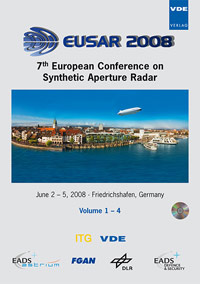Electrical Architecture of the SENTINEL-1 SAR Antenna Subsystem
Conference: EUSAR 2008 - 7th European Conference on Synthetic Aperture Radar
06/02/2008 - 06/05/2008 at Friedrichshafen, Germany
Proceedings: EUSAR 2008
Pages: 4Language: englishTyp: PDF
Personal VDE Members are entitled to a 10% discount on this title
Authors:
Schönfeldt, Uwe; Braubach, Harald (EADS Astrium GmbH, 88039 Friedrichshafen, Germany)
Abstract:
The Sentinel-1 Mission is part of the Global Monitoring for Environment and Security (GMES) initiative whose overall objective is to support Europe’s goals regarding sustainable development and global governance of the environment by providing timely and quality data, information, services and knowledge. Specifically, the all-weather imaging capability of the C-Band SAR (C-SAR) instrument carried by Sentinel-1 shall provide measurement data at high and medium resolutions for land, coastal zones and ice observations in cloudy regions and during night, coupled with radar interferometry capability for detection of small (millimetre or sub-millimetre level) ground movements, with the appropriate frequencies and operating modes required to support the GMES services. The SAR Antenna Subsystem (SAS) represents the sensor part of the C-SAR instrument and is an active phased array system with Tx and Rx gain and phase control distributed over the antenna area. These functions are provided by so called Transmit Receive Modules (TRMs) as part of the Electronic Frontend End (EFE) assemblies. The SAS is capable to perform rapid electronic beam steering, beam shaping, and also polarisation selection. The dual polarised antenna allows transmission in one single, but selectable polarisation (H or V) and simultaneous reception of both H and V polarisations. The electrical architecture of the SAS comprises equipment for DC power distribution, RF signal distribution, SAS control.


